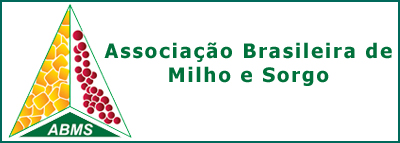RESPOSTA DO MILHO SAFRINHA À ADUBAÇÃO EM DUAS ÉPOCAS DE SEMEADURA
DOI:
https://doi.org/10.18512/1980-6477/rbms.v17n1p76-90Keywords:
veranico, Zea maysAbstract
RESUMO - Neste trabalho, objetivou-se avaliar a resposta do milho à adubação NPK, em semeadura realizada nos meses de janeiro e fevereiro, sucedendo a cultura da soja, em Rio Verde-GO. O experimento foi conduzido em delineamento de blocos casualizados, num esquema fatorial 4x2, constituído por quatro opções de adubação NPK na semeadura, com ou sem adubação nitrogenada de cobertura. Foram cultivados os híbridos P 30F53 YH e DKB 310 PRO, no primeiro e segundo anos, respectivamente, e coletados os dados de altura de plantas e de espigas, número de espigas, de fileiras por espiga, de grãos por fileira, massa de 1.000 grãos e produtividade. A produtividade de grãos do milho safrinha é influenciada pelas épocas de semeadura que definem as condições de disponibilidade hídrica, e pela adubação nitrogenada em cobertura, sem expressar resposta à adubação NPK na semeadura, que, em janeiro, favorece a produtividade, por conciliar melhor a distribuição de chuvas no final da fase de desenvolvimento vegetativo e na fase reprodutiva, etapas críticas para o potencial produtivo do milho. Independentemente da época de cultivo e da adubação NPK na semeadura, a aplicação de N em cobertura promove ganho significativo de produtividade da cultura.
Palavras-chave: sucessão de culturas, adubação de manutenção, veranico, Zea mays L.
SECOND-SEASON CORN RESPONSE TO FERTILIZATION IN TWO SEEDING TIMES
ABSTRACT - This study aimed to evaluate the response of maize to NPK fertilization in sowing in January and February, succeeding soybean crop, in Rio Verde, State of Goiás, Brazil. The experiment was conducted in a randomized block design in a 4x2 factorial scheme, and it consisted of four NPK options in seeding time, with or without nitrogen topdressing. Hybrids P 30F53 YH and DKB 310 PRO were grown in the first and second year, respectively. We collected the data of plant height, ears height, number of ears, number of rows per ear, number of grains by row, thousand kernel weight and productivity. The productivity of second-season maize grain is influenced by sowing time, which defines the conditions of water availability, and the nitrogen fertilization, without expressing response to NPK fertilizer at sowing. Seeding in January favors productivity to reconcile better distribution of rainfall at the end of the vegetative growth phase and reproductive phase, critical steps for the production of maize potential. Regardless of the growing season and NPK fertilization at sowing, application of N topdressing promotes significant productivity gain.
Keywords: crop succession, fertilization, nutrient requirements, dry spell, Zea mays L.
Downloads
Published
How to Cite
Issue
Section
License
Authors retain copyright and grant the journal right of first publication with the work simultaneously licensed under the Creative Commons Attribution License that allows the sharing of work and recognition of the work of authorship and initial publication in this journal.
Authors are able to take on additional contracts separately for non-exclusive distribution of the version of the paper published in this journal (eg, in an institutional repository or publish as a book), with acknowledgment of its initial publication in this journal.
Authors are permitted and encouraged to post their work online (eg, in institutional repositories or on their website) at any point before or during the editorial process, as this may leadto productive exchanges, as well as increase the impact and citation of published work.



